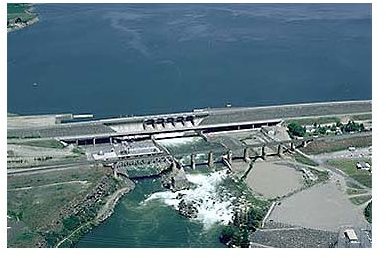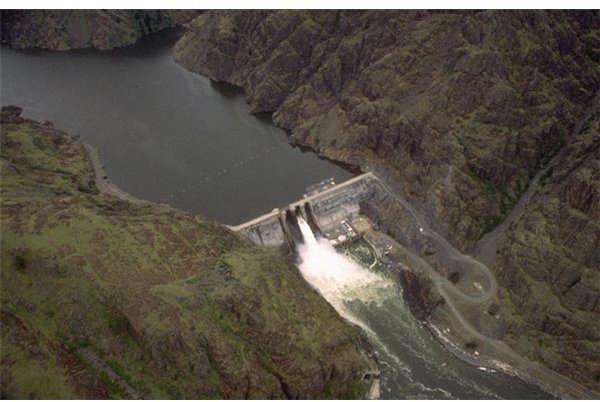The Hydroelectric Power Plants in the United States: How Do They Work?
What Was Preventing the US Government from Using Hydroelectric Power Plants Before?
According to the US Geological (USGS) hydroelectricpower is one of the most important renewable source of energy but only about 7 percent of total power is produced by hydroelectric power plants in the United States.
The negative environmental impacts were big factors that prevented the government to proceed with this undertaking. Surrounding valleys with existing towns, farmlands, pastures, and scenic locations can be permanently flooded. This can also disrupt the wildlife habitats and destroy existing fish life. Blocked river passages will prevent the arrival of migrating fishes like the salmon.
The only solution considered to fully harness the existing hydroelectric power plants to provide renewable and cleaner energy was at least modify the old ones.
There was also no assurance that hydroelectric power generation could reduce the production of greenhouse gases. Plant materials in newly flooded areas will decay in an environment with low levels of oxygen, thereby producing more potent greenhouse gases like methane.
How does Hydroelectric Power Work?
A hydroelectric power plant converts water pressure into electricity. As a renewable source, it can endlessly sustain the production of hydroelectricity by using the gravitational force of falling or flowing water and water turbines.
It turns the potential energy of water gathered in dam reservoirs in high places, into moving kinetic energy that rotates the turbines. The turbines generate electricity by turning magnets around stationary metal coils, until changes in the magnet’s polarity produces Alternating Currents; or what we know as AC. The power generated passes through transformers to increase the voltage and send them to distribution facilities, in-charge of sending and regulating electricity through power lines. Only then will electricity become available in our homes.
The second type of hydroelectric power is the one that takes advantage of the rising and the falling tides and the strong currents near estuaries. This one uses turbines that come in the form of rolling logs with horizontally placed axes exposed to the sea. As the tide rises and falls, the horizontal protrusions will spin like a log to generate electricity. Similar to its dam counterpart, it will send the raw power to transformers and distribution facilities for regulation.
The Advantages of Hydroelectric Power in Our Environment
In as much as hydroelectric power gets its energy from falling, flowing, or tidally moving water, production of electrical energy has no direct waste and an almost zero level of greenhouse gas. Due to the absence of combustion, there is no emission of carbon dioxide, sulfur dioxide, nitrogen oxides, dust, or other pollutants.
Another advantage is the elimination of the cost of imported fuel to run the system. Hydroelectric plants use fossil fuels such as oil, natural gas, or coal. In addition, since the plant runs under full automation, labor cost is low.
$30.6 Million Economic Recovery Fund to Upgrade Hydroelectric Power Plants in the United States
The upgrading of these hydropower facilities is all about increasing the sources of clean energy through the use of hydroelectric power systems without the need to build new dams or making any modifications to existing ones to back up the hydropower plant’s capacity and ability to increase its efficiency.
Upgrading hydroelectric power plants without the need to resort to civil works will provide a less expensive way of increasing renewable energy which is placed at an average estimated cost of less than 4 cents per kWh. The absence of undertaking dam constructions or modifications will also speed up the process of modernizing seven hydroelectric power plants in order to meet the ultimate goal of stimulating the economy.
Eventually, having more inexpensive sources of renewable energy will perk up the economic condition in every local community thus, create more employment opportunities.
The Seven Hydroelectric Power Plants in the United States and Their Proposed Modenization
The main objectives of the $30.6 million undertaking include improvement of water intakes and implementing newer control systems that will increase power generation. In addition, more efficient and fish friendly turbines will be utilized to lessen any negative environmental impact that these power plants are causing.
The $30.6 million Recovery Funds will be released to modernize the following hydroelectric power plants in the United States:
Alabama Power Company- About $6 million will be allotted to three hydroelectric plants located along the Coosa River in Mitchell, Alabama will have four units upgraded by replacing the vintage turbines dating back from the 1940s to the 1960s with highly-modernized stainless steel turbines that can increase the hydropower plants’ efficiency by generating additional 36,087 MWh annually renewable energy.
Find the continuation of the hydroelectric power plants’ modernization projects on the next page.

The Seven Hydroelectric Power Plants in the United States and Their Proposed Modenization (continuation)
Alcoa, Inc- An estimated $13 million will be used to replace 4 ninety-year-old Francis Turbines in Alcoa’s Tapoco Cheoah plant located in Robbinsville, N.C. The expected increase in renewable energy of 95,000 MWh will provide additional generating capacity of 22 MW. Replacements will include 4 new high-efficiency stainless steel turbines, transformers and generators since the upgrading intends not only to generate more energy but also to replace its present system of water cooled transformers which will decrease the risks of oil spills in the river. The presence of lead and asbestos currently existing in the 4 generating units will also be eliminated.
As an update, Alcoa, Inc. kicked-ff with the $110 million modernization project at Cheoah Dam Modernization Project on August 27, 2010. this project is expected to increase the dam’s efficiency and energy output for the next forty to fifty years.
City of Tacoma, Department of Public Utilities- The local government will receive about $4.67 million to fund a project that will add two units of 1.8 MW Francis Turbines to the 81 MW Cushman No. 2 Dam located in Potlatch, Washington. About 23,500 MWh of additional annual generation is expected from this project. The undertaking will include the integration of a fish collection pool above the existing dam as a new habitat for the native fish that had avoided the area since 1920.
The City of Boulder, Colorado — The city will receive about $1.18 million in government funding to modernize the century old Boulder Canyon Hydroelectric Project. A single high-efficiency turbine will replace two old turbine units to enable the hydroelectric power plant to have a wider range of water flow that will result to increased power generation by 11,000 MWh or 30% of its present capacity. The area will like wise benefit from the upgrading projects as asbestos removal will eliminate the presence of environmental hazards.
Update about Boulder Cty’s hydroelectric modernization project - On October 08, 2010, the city opened this government project for public bidding.
Energy Northwest — An $800,000 project to add a high technology Pelton Wheel Turbine to Packwood Lake Hydroelectric in Packwood, Washington will be undertaken to generate a 6% increase of about 5,868 MWh at lower costs in terms of operations. The project is also expected to provide a more sustainable downstream habitat for the local fish population.
Update: The Federal Energy Regulatory Commission granted the Packwood Lake Hydroelectric Project the renewal of its license in early 2010; hence, the modernization project is expected to be completed by the later part of 2011.
The Incorporated County of Los Alamos, N.M will receive $4.56 million in government funding to improve the existing 13.8 MW hydroelectric plant in Abiquiu, N.M by adding low-flow turbine that will increase the capacity of the power plant to generate additional 3 MW or equivalent to an annual increase of 6,462 MWh in renewable energy. This augments the capability of the hydroelectric power plants when dam releases are below the requirements of the two existing turbines. The addition of the state-of-the –art turbine is expected to improve the minimum flows.
North Little Rock Electric Department- The 39 MW hydroelectric facilities along the Arkansas River, at Little Rock, Arkansas will receive $450,000 to upgrade the hydroelectric facility by installing an Automated Intake Maintenance Device. This will free the river area from obstructions that hamper the facility’s intakes and eliminate the high costs of dredging. The improvement will now allow the power plant to operate with more efficiency.
The calls for cleaner energy in order to slow down global warming are now getting the long awaited responses through these upgrading projects. The selection of the seven hydroelectric power plants in the United States, were based on their ability to increase electrical power generation carbon free. The full operation of these renewable sources of energy will reduce carbon emissions by more than 110,000 tons per year owing to the improvement of their hydroelectric power generations.
